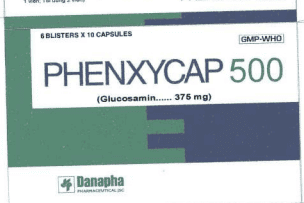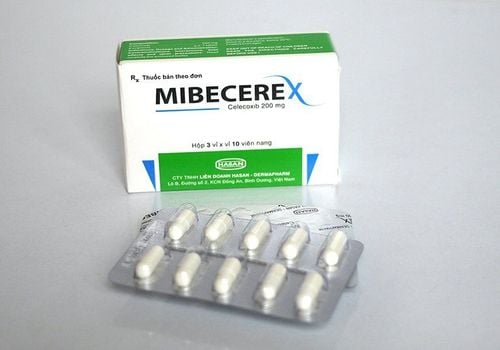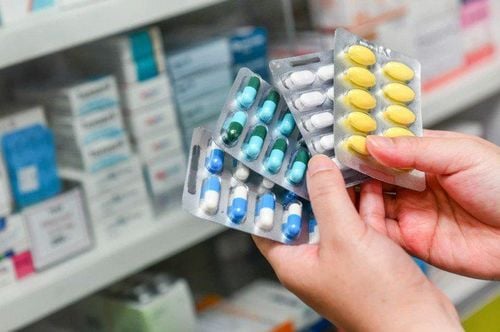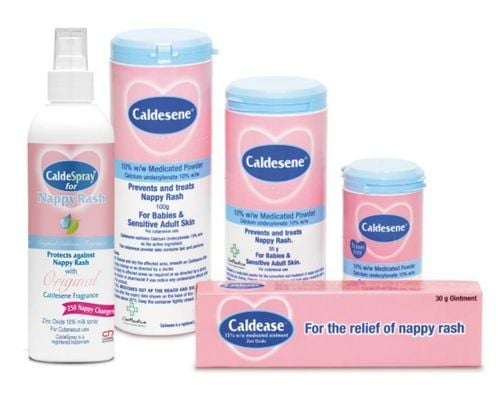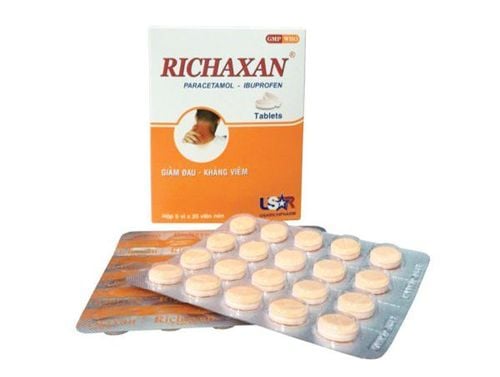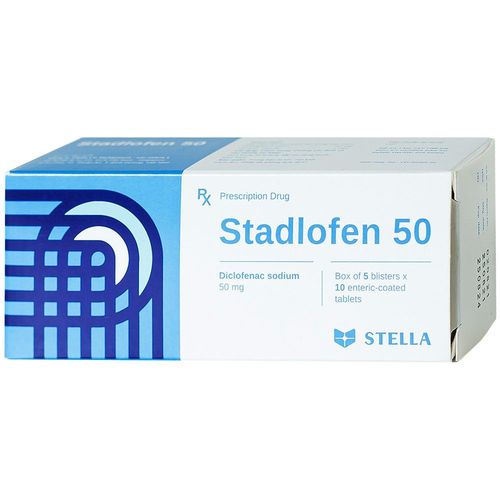This is an automatically translated article.
Diclocare contains the active ingredient diclofenac, which is made in the form of a gel for topical application. The drug is indicated in the local treatment of periarthritis, bursitis, tendon sheath inflammation as well as injuries that cause tendonitis, muscle and joint inflammation... Let's learn about the uses and notes when using the drug. Diclocare through the article below.
1. Uses of Diclocare
1.1. Indications Diclocare contains the active ingredient diclofenac sodium 1%, which is prepared in the form of a gel for topical application. The drug is indicated in the local treatment of periarthritis, bursitis, tendonitis as well as injuries causing inflammation of tendons, muscles and joints (such as sprains, hematomas, strains).
1.2. Pharmacodynamics Active ingredient Diclofenac sodium is the sodium salt form of diclofenac - benzene acetic acid derivative, belonging to the group of non-steroidal anti-inflammatory drugs (NSAIDs) with antipyretic, analgesic and anti-inflammatory effects. Diclofenac is used in the symptomatic treatment of pain, osteoarthritis, dysmenorrhea, spondylitis, rheumatoid arthritis, and keratitis.
1.3. Pharmacokinetics The anti-inflammatory action of Diclofenac is based on inhibition of leukocyte movements as well as the enzyme cyclooxygenase (COX-1 and COX-2), which in turn leads to inhibition of peripheral prostaglandin synthesis. paralysis. Sensitization of prostaglandins to pain receptors leads to inhibition of their synthesis, which in turn leads to the analgesic effect of diclofenac. The antipyretic effect of the drug is due to action on the hypothalamus, which in turn leads to peripheral vasodilation, heat dissipation and increased blood flow through the skin.
Absorption: Diclofenac is rapidly and almost completely absorbed from the gastrointestinal tract. Food does not affect the amount of drug absorbed, but only the absorption time of diclofenac. Distribution: Approximately 99.7% of the drug is bound to plasma proteins, of which 0.06% is bound to other proteins and the remainder is bound to plasma albumin. Elimination: Diclofenac is eliminated via metabolism and urinary, biliary excretion of glucuronide and sulfate conjugates of its metabolites. Little or no unchanged drug is excreted in the urine. Approximately 65% of the dose is excreted in the urine, 35% of the dose is excreted in the bile as conjugates of diclofenac metabolites.
2. Dosage of Diclocare
Diclocare is used by applying a thin layer to the damaged skin. The effect of Diclocare drug depends on the specific dose as follows:
For adults and children 12 years of age and older, apply a thin layer of Diclocare to the affected skin area with a frequency of 2 times/day. Gently massage the medication onto the affected area. The amount of Diclocare applied depends on the area of the damaged skin and it is necessary to ensure that the dose is enough to cover the damaged skin. Normally, for 0.5g, the amount of drug gel that can be applied on the skin area is 5cm x 5cm. Treatment with Diclocare can be as long as 90 days.
3. Contraindications of Diclocare
Contraindicated to use Diclocare in the following cases:
Patients with peptic ulcer or suspected peptic ulcer progress, gastrointestinal bleeding; People who are allergic to Diclofenac or any of the ingredients in Diclocare; Patients who have ever had bronchial asthma, urticaria, allergy to aspirin, acute rhinitis or allergy to non-steroidal anti-inflammatory drugs (NSAIDs); People with prophyrin disease; Pregnant women, lactating women; Children under 12 years old.
4. Note when using Diclocare
4.1. Side effects Some side effects may be encountered when using Diclocare drugs as follows:
Unusual skin reactions to light such as rash...; Allergic dermatitis ; Severe allergic reactions such as swelling of the lips, obstruction of the airways due to bronchospasm, swelling of the tongue and throat; In case of experiencing side effects when using the drug, the patient should stop treatment with Diclocare and notify the treating doctor for timely treatment.
4.2. Notes on use Some notes when using Diclocare are as follows:
Diclocare is like other non-steroidal anti-inflammatory drugs, patients may experience side effects such as hypersensitivity reactions (especially in the patient has not previously used Diclofenac); Diclocare should be used with caution in patients with peptic ulcer disease or in patients with severe bleeding, liver or kidney failure; Do not apply the medicine to open wounds, infected skin or scaly skin; Do not apply the drug to the mucous membranes, eyes. In case of drug contact in these areas, they must be washed immediately; Do not use the drug in pregnant and lactating women. Diclocare contains the active ingredient diclofenac, which is made in the form of a gel for topical application. The drug is indicated in the local treatment of periarthritis, bursitis, tendon sheath inflammation as well as injuries causing tendonitis, muscle and joint inflammation... To ensure effective treatment and avoid side effects , patients need to take medicine according to prescription or consult a doctor, pharmacist for advice.
Follow Vinmec International General Hospital website to get more health, nutrition and beauty information to protect the health of yourself and your loved ones in your family.
Please dial HOTLINE for more information or register for an appointment HERE. Download MyVinmec app to make appointments faster and to manage your bookings easily.




